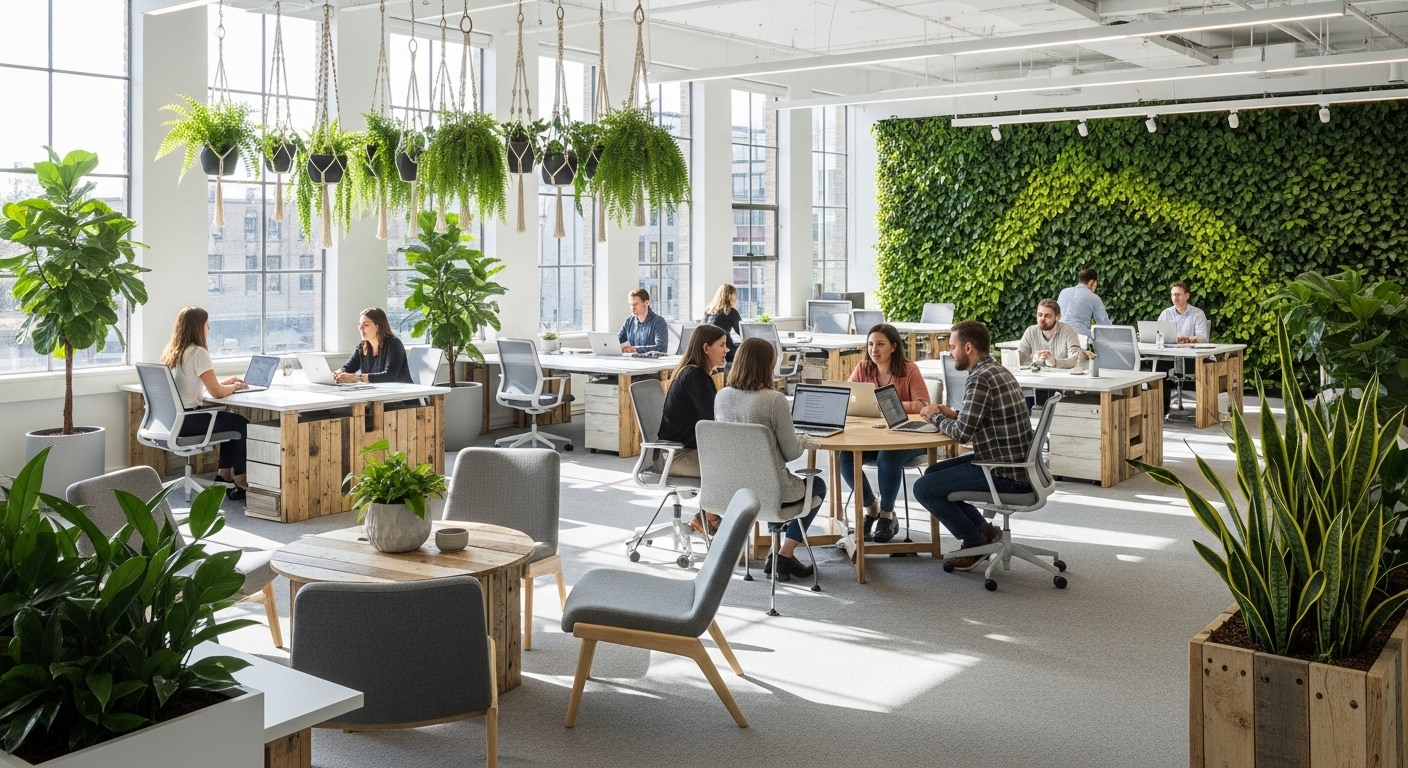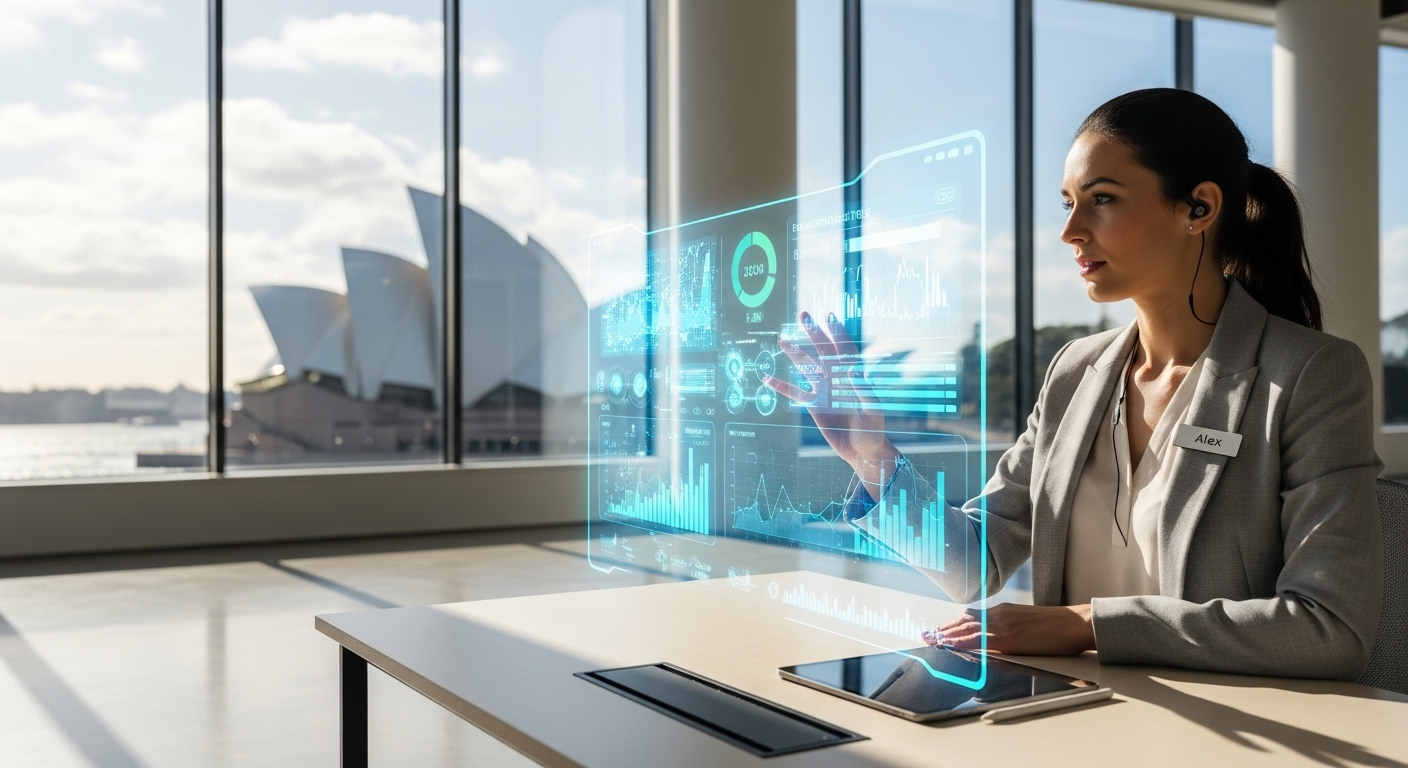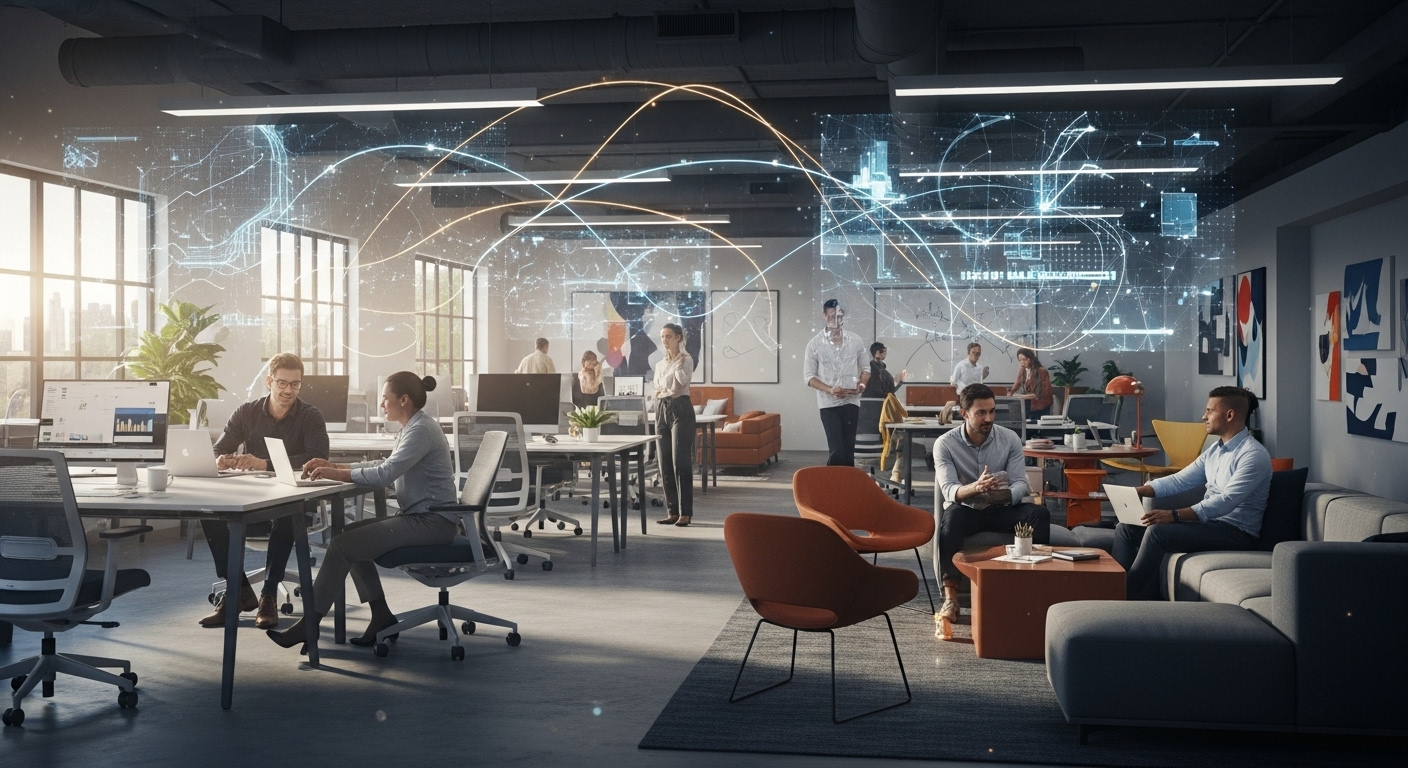In the evolving narrative of the future of work, the conversation is shifting from merely sustainable to actively regenerative. While sustainability aims to neutralize a company’s environmental impact, a regenerative approach seeks to actively improve the ecosystems it touches—including the human ecosystem within its walls. This isn’t just about reducing carbon footprints; it’s a strategic reimagining of the workplace as a living system that can restore and enhance employee well-being, foster innovation, and build profound business resilience. As employees increasingly seek employers whose values align with their own, and as the link between physical environment and cognitive performance becomes undeniable, creating a regenerative workplace is no longer a niche ideal. It is a competitive imperative. This article explores the core pillars of this new paradigm, moving from energy conservation and circular materials to the powerful influence of biophilic design and a culture that champions true, lasting change.
Beyond ‘Green’: Defining the Regenerative Workplace Model
For decades, the benchmark for an environmentally conscious office has been ‘sustainability,’ often measured by certifications like LEED which focus on reducing negative impacts. The regenerative model, however, represents a fundamental evolution in this thinking. It asks not just ‘how can we do less harm?’ but ‘how can our workspace be a positive force for both the planet and our people?’ A regenerative workplace is designed to be a net-positive system. This means it might generate more energy than it consumes, purify the air and water it uses, and, crucially, enhance the health and vitality of its occupants. This approach is built on principles of systems thinking, recognizing that the office is not an isolated container but an ecosystem deeply interconnected with its community and natural environment. It moves beyond a simple checklist of green features to a holistic philosophy that integrates people, planet, and performance. For example, instead of just installing energy-efficient lights, a regenerative design would maximize natural daylight, which not only saves electricity but also demonstrably improves employee mood and alertness. Instead of just having a recycling program, it would prioritize a circular economy, sourcing furniture designed for disassembly and reuse, thereby eliminating waste entirely. This holistic view redefines the office from a cost center into a strategic asset that actively contributes to organizational health and ecological restoration.
The Energy Equation: Powering Productivity with Smart Conservation
Energy is the lifeblood of any modern office, but in a regenerative workplace, its management is both smart and symbiotic. The goal is to create a building that is not a passive consumer but an active participant in a clean energy cycle. The foundation lies in a high-performance building envelope—superior insulation, triple-glazed windows, and weather sealing that drastically reduce the energy required for heating and cooling. On top of this foundation, smart technologies act as the building’s nervous system. IoT-enabled HVAC systems, for instance, don’t just maintain a static temperature; they learn occupancy patterns and adjust in real-time, delivering comfort precisely where and when it’s needed, minimizing waste. Lighting follows a similar principle, combining ultra-efficient LEDs with daylight harvesting and motion sensors to ensure no watt is spent illuminating an empty room. Many organizations are taking this a step further by becoming producers of clean energy. On-site renewable sources, most commonly rooftop solar panels, can often meet a significant portion, if not all, of the building’s energy needs.
A report from the American Council for an Energy-Efficient Economy (ACEEE) found that comprehensive energy efficiency programs can lead to savings of up to 30%, directly impacting the bottom line while reducing environmental strain.
Water conservation is another critical part of the equation. Low-flow fixtures, sensor-activated taps, and rainwater harvesting systems for irrigation and non-potable uses can cut water consumption by over 50%, a vital step in water-stressed regions and a mark of a truly responsible organization.
The Material World: Sourcing for a Circular Economy
A regenerative workplace is built, quite literally, on a foundation of conscious material choices. This means moving away from the traditional linear model of ‘take, make, dispose’ and embracing a circular economy where resources are kept in use for as long as possible. The selection process for every material, from structural beams to carpet tiles, is scrutinized for its entire lifecycle. Priority is given to materials that are recycled, reclaimed, or rapidly renewable. Think office interiors featuring beautiful reclaimed wood from old barns, partitions made from recycled plastic bottles, and flooring made from sustainable cork or bamboo. Beyond the materials themselves, the focus is on low-VOC (Volatile Organic Compound) paints, adhesives, and finishes. These compounds are common in conventional building materials and can ‘off-gas’ for years, polluting indoor air and negatively impacting employee health and cognitive function. By eliminating them, a company makes a direct investment in the well-being of its team. Furthermore, circularity is about designing for the future. This involves selecting furniture and fixtures that are modular and designed for disassembly. When a workspace needs to be reconfigured, these components can be easily taken apart and reused, rather than being sent to a landfill. This ‘cradle-to-cradle’ approach not only drastically reduces waste but also provides long-term financial benefits by extending the useful life of every asset.
Biophilic Blueprint: Integrating Nature to Boost Cognitive Function
Humans have an innate connection to nature, a concept known as biophilia. A regenerative workplace leverages this connection as a powerful tool for enhancing well-being and performance. Biophilic design is far more than scattering a few potted plants around the office; it’s a comprehensive strategy to weave natural elements and patterns into the fabric of the built environment. Maximizing natural light is paramount. This involves strategic orientation of the building, large windows, and open floor plans that allow daylight to penetrate deep into the space. Access to views of nature—be it a park, a river, or even a curated green roof—is another key element, shown to reduce stress and mental fatigue. The direct presence of nature is also crucial. This can take the form of living green walls, indoor gardens, integrated water features, and an abundance of diverse plant life. These elements not only improve aesthetics but also actively help purify the air and regulate humidity.
Research published in the journal *Building and Environment* has shown that offices enriched with biophilic elements can boost productivity by up to 15% and significantly increase rates of reported well-being.
The strategy also incorporates indirect connections to nature, using natural materials like wood and stone, choosing colors from a nature-inspired palette, and creating spaces that mimic natural landscapes, such as cozy, protected nooks for focused work and open, expansive areas for collaboration. This blueprint creates an environment where people feel calmer, more focused, and more creative.
The Air We Breathe: Optimizing Indoor Environmental Quality (IEQ)
The invisible environment of an office—the quality of the air—has a profound and measurable impact on the health, comfort, and productivity of its occupants. A core tenet of the regenerative workplace is the active management of Indoor Environmental Quality (IEQ). In many conventional buildings, concentrations of pollutants like CO2 and VOCs can be two to five times higher indoors than outdoors. This ‘stale’ air contributes to fatigue, headaches, and a decline in cognitive function often referred to as ‘sick building syndrome’. A regenerative approach tackles this head-on with advanced air filtration and ventilation systems. This means installing high-grade MERV 13 or higher filters capable of capturing fine particulates, allergens, and viruses. It also involves demand-controlled ventilation, which uses CO2 sensors to modulate the intake of fresh air based on the number of people in a room, ensuring optimal air quality without wasting energy. The source of pollutants is also addressed by strictly using non-toxic, green-certified cleaning products, eliminating a major contributor to poor IEQ. Transparency is key; many leading companies now use real-time IEQ dashboards to display data on air quality, temperature, and humidity, empowering employees and demonstrating a tangible commitment to their health. The benefits are clear: studies from institutions like the Harvard T.H. Chan School of Public Health have directly linked better air quality with significant improvements in cognitive scores, particularly in areas of strategic thinking and crisis response.
Cultivating Change: Fostering a Culture of Sustainability
A beautifully designed, energy-efficient building is only half the equation. A truly regenerative workplace thrives when its physical design is matched by a vibrant and engaged organizational culture. The most advanced systems and sustainable materials will fail to reach their potential if the people using the space are not active participants in the mission. Fostering this culture begins with education and empowerment. Companies can create ‘green teams’ or sustainability committees, giving passionate employees the agency to lead initiatives and champion best practices. These initiatives can range from robust composting and recycling programs that aim for zero waste to educational workshops on reducing personal environmental impact. Clear communication is essential. Explaining the ‘why’ behind the building’s features—how the smart lighting saves energy or how the biophilic design supports focus—transforms passive occupants into knowledgeable stewards of their environment. This can be supported by incentivizing sustainable behaviors, such as offering benefits for employees who use public transportation, cycle to work, or participate in carpooling. The culture should also extend beyond the office walls through community engagement, such as partnering with local environmental groups or organizing volunteer days for ecological restoration projects. When employees see that the company’s commitment to regeneration is authentic and multifaceted, they become more engaged, more loyal, and more likely to contribute their own ideas, creating a virtuous cycle of continuous improvement that benefits the organization, the community, and the planet.
Conclusion
Creating a regenerative workplace is a powerful declaration of a company’s vision for the future—one that values a symbiotic relationship between people, planet, and performance. It moves beyond the passive, resource-draining office of the past to create a dynamic ecosystem that actively gives back. By integrating smart energy and water conservation, sourcing materials for a circular economy, and embracing the profound psychological benefits of biophilic design, organizations can build spaces that are not only environmentally responsible but also deeply human-centric. The focus on superior indoor air quality and the cultivation of an engaged, sustainability-focused culture further solidifies the workplace’s role as a strategic asset. The takeaway for leaders is clear: the physical environment is one of the most potent tools available for boosting productivity, attracting and retaining top talent, and building a resilient brand. In an era of unprecedented change, the regenerative workplace isn’t just a trend; it’s a blueprint for a healthier, more creative, and more durable way of doing business. It is an investment that yields returns far beyond the balance sheet, regenerating the very resources—both natural and human—that are essential for long-term success.





